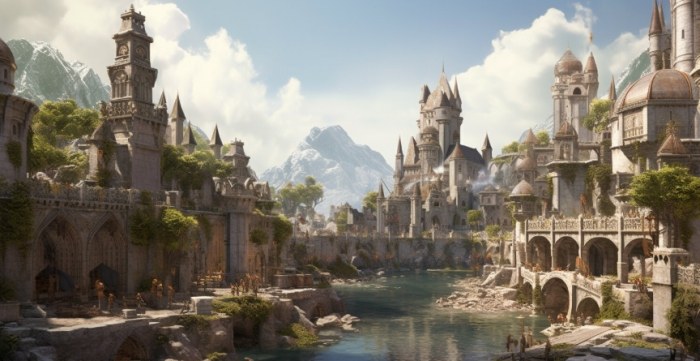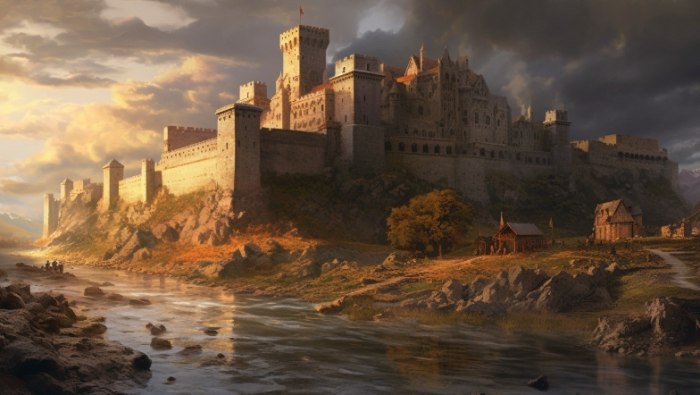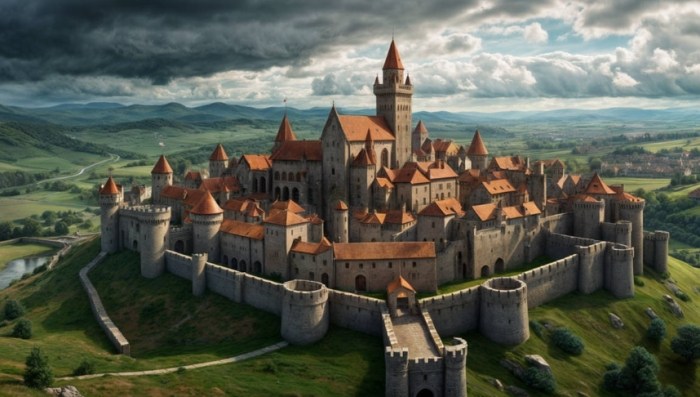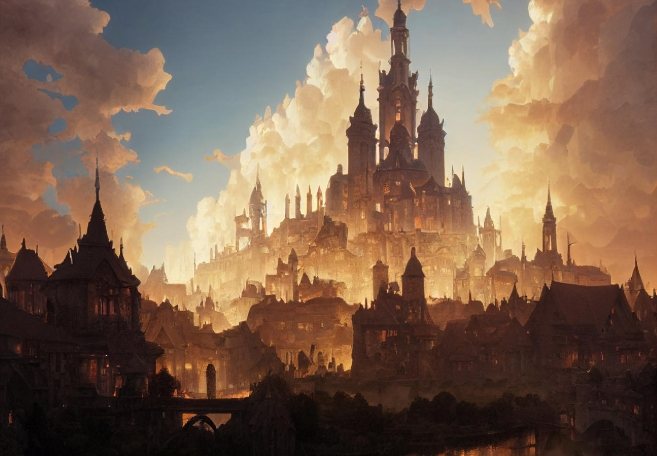Medieval Kingdoms: The Rise and Fall of Europe’s Greatest Dynasties
Advertisements
Curious about medieval kingdoms and their epic histories? Explore powerful dynasties like the Holy Roman Empire, Byzantine splendor, and feudal systems that shaped Europe’s destiny. Uncover castles, battles, and cultural milestones!
Table of Contents
- Introduction: The Medieval Mosaic of Europe
- Historical Attempts: The Genesis of Medieval Kingdoms
- Pivotal Events: Turning Points in Medieval Kingdoms
- Character Analyses: Key Figures in Medieval Kingdoms
- Classic Interpretations: Understanding Medieval Kingdoms
- Timeline: Significant Milestones in Medieval Kingdoms
- Portraits of Key Figures: A Closer Look
- Q&A: Addressing Common Questions
Introduction: The Medieval Mosaic of Europe

In the heart of Europe, during the epoch known as the Middle Ages, a complex web of kingdoms, duchies, and principalities emerged, each with its own unique identity, struggles, and triumphs. From the rugged coasts of Brittany to the sun-drenched fields of Provence, France, as we know it today, was a patchwork of medieval kingdoms and territories that shaped not only the nation's history but also the broader narrative of medieval Europe. This article delves into the intricate tapestry of medieval kingdoms, with a particular focus on the French context, exploring historical attempts, pivotal events, character analyses, classic interpretations, a timeline of significant milestones, and vivid portraits of key figures.
Historical Attempts: The Genesis of Medieval Kingdoms

The Fall of Rome and the Dawn of Feudalism
The collapse of the Western Roman Empire in the 5th century AD marked the beginning of a new era in European history. As centralized authority crumbled, local lords and warlords seized the opportunity to establish their own domains, laying the groundwork for the feudal system that would dominate the medieval landscape. In France, this transition was marked by the emergence of several powerful regional entities, each vying for supremacy.
The Carolingian Empire: A Brief Unification
One of the earliest attempts at creating a unified kingdom in what would become France was the Carolingian Empire, founded by Charlemagne in the 8th century. Charlemagne's conquests expanded his realm across much of Western Europe, including present-day France, Germany, and Italy. However, his empire was short-lived, fragmenting after his death into several smaller kingdoms, each ruled by his descendants.
The Capetian Dynasty: The Birth of France
The Capetian dynasty, established in 987 AD with the coronation of Hugh Capet, marked a turning point in French history. Unlike their predecessors, the Capetians focused on consolidating power within the Île-de-France region, gradually expanding their influence through strategic marriages, alliances, and, when necessary, military conquests. This slow but steady process laid the foundation for the modern French state.
Pivotal Events: Turning Points in Medieval Kingdoms
The Battle of Hastings (1066): A Cross-Channel Impact
While the Battle of Hastings took place across the English Channel, its repercussions were felt deeply in France. William the Conqueror's victory over Harold Godwinson not only established Norman rule in England but also solidified the Normans' position in northern France, where they held significant territories. This event underscored the interconnectedness of medieval kingdoms and the far-reaching consequences of local conflicts.
The Hundred Years' War (1337-1453): A French-English Saga
Perhaps the most defining conflict in medieval French history, the Hundred Years' War was a series of intermittent wars fought between England and France over territorial claims and succession disputes. The war witnessed iconic moments such as Joan of Arc's leadership, the Battle of Agincourt, and the eventual expulsion of the English from French soil. This prolonged struggle not only shaped the political landscape of France but also fostered a sense of national identity among its people.
The Black Death (1347-1351): A Pandemic's Impact
The Black Death, a devastating pandemic that swept across Europe in the mid-14th century, had a profound impact on medieval kingdoms, including France. With an estimated one-third of the population succumbing to the disease, the Black Death disrupted social structures, economies, and even the balance of power among kingdoms. It also led to significant changes in labor relations, as survivors demanded higher wages and better working conditions.
Character Analyses: Key Figures in Medieval Kingdoms

Charlemagne: The Father of Europe
Charlemagne, also known as Charles the Great, was a towering figure in medieval European history. As the King of the Franks and later Emperor of the Romans, Charlemagne united much of Western Europe under his rule, promoting education, culture, and Christianity. His reign laid the foundations for the Carolingian Renaissance, a period of intellectual and cultural revival that had a lasting impact on European civilization.
Eleanor of Aquitaine: A Powerful Medieval Queen
Eleanor of Aquitaine was one of the most influential women of the Middle Ages. As the Duchess of Aquitaine, Queen of France (through her marriage to Louis VII), and later Queen of England (through her marriage to Henry II), Eleanor wielded considerable political power. Her patronage of the arts, support for troubadours, and involvement in the Crusades made her a legendary figure in medieval history.
Joan of Arc: The Maid of Orléans
Joan of Arc, a peasant girl from Domrémy, became a national heroine of France during the Hundred Years' War. Claiming to have received divine visions, Joan convinced the Dauphin Charles to allow her to lead the French army against the English. Her military successes, including the lifting of the siege of Orléans, turned the tide of the war in France's favor. However, Joan was eventually captured by the English, tried for heresy, and burned at the stake. Her legacy as a symbol of French nationalism and resistance endures to this day.
Classic Interpretations: Understanding Medieval Kingdoms
Feudalism: The Social and Political Structure
Feudalism was the dominant social and political system in medieval Europe, characterized by a hierarchical structure of lords, vassals, and serfs. Lords granted land (fiefs) to vassals in exchange for military service and loyalty, while serfs worked the land in return for protection. This system, while providing stability in a time of frequent warfare, also led to significant inequalities and power imbalances.
Chivalry: The Code of Conduct for Knights
Chivalry was a moral and social code that governed the behavior of knights in medieval Europe. It emphasized virtues such as courage, honor, loyalty, and courtesy towards women. Chivalry also included a set of rituals and ceremonies, such as the knighting ceremony and the tournament, which served to reinforce the knightly class's status and identity.
The Crusades: Religious and Political Motivations
The Crusades were a series of religious wars fought between Christians and Muslims over control of the Holy Land. While primarily motivated by religious fervor, the Crusades also had significant political and economic implications. They led to increased trade and cultural exchange between Europe and the Middle East, as well as the establishment of new kingdoms and territories in the Eastern Mediterranean.
Timeline: Significant Milestones in Medieval Kingdoms
| Year | Event |
|---|---|
| 476 | Fall of the Western Roman Empire |
| 768 | Charlemagne becomes King of the Franks |
| 800 | Charlemagne crowned Emperor of the Romans |
| 987 | Hugh Capet crowned King of France, founding the Capetian dynasty |
| 1066 | Battle of Hastings, Norman conquest of England |
| 1337 | Start of the Hundred Years' War between England and France |
| 1347 | Outbreak of the Black Death in Europe |
| 1415 | Battle of Agincourt, English victory over the French |
| 1429 | Joan of Arc leads the French army to victory at Orléans |
| 1453 | End of the Hundred Years' War, French victory |
| 1492 | Columbus discovers the Americas, marking the end of the Middle Ages |
Portraits of Key Figures: A Closer Look
Philip II Augustus: The Expansionist King
Philip II Augustus, King of France from 1180 to 1223, was a formidable ruler who significantly expanded the French kingdom's territory. Through a combination of military conquests, strategic marriages, and diplomatic maneuvering, Philip increased the size of France by nearly a third. His reign also saw the construction of the Louvre fortress in Paris, which would later become a symbol of French royal power.
Louis IX (Saint Louis): The Just King
Louis IX, who reigned from 1226 to 1270, was one of France's most beloved kings. Known for his piety, justice, and compassion, Louis worked tirelessly to improve the lives of his subjects. He established the first royal courts, reformed the legal system, and promoted education and the arts. Louis's crusades to the Holy Land, though ultimately unsuccessful, further enhanced his reputation as a devout and courageous ruler.
Catherine de' Medici: The Italian Queen of France
Catherine de' Medici, an Italian noblewoman who became Queen of France through her marriage to Henry II, played a pivotal role in French politics during the 16th century. As the mother of three French kings (Francis II, Charles IX, and Henry III), Catherine wielded considerable influence over the French court. Her reign was marked by religious conflicts, including the St. Bartholomew's Day massacre, and her efforts to maintain a balance of power between Catholics and Protestants.
Q&A: Addressing Common Questions
1. What are the kingdoms of the medieval period?
The medieval period saw the rise and fall of numerous kingdoms across Europe. Some of the most prominent medieval kingdoms included:
- France: Under the Capetian dynasty, France gradually expanded its territory and influence, becoming a major European power.
- England: After the Norman conquest, England developed a strong monarchy and played a significant role in the Hundred Years' War.
- Spain: The Reconquista, a series of campaigns to reclaim the Iberian Peninsula from Muslim rule, led to the formation of several Christian kingdoms, which eventually united to form modern-day Spain.
- Germany: The Holy Roman Empire, a loose federation of Germanic states, was a dominant force in Central Europe during the medieval period.
- Italy: Italy was fragmented into numerous city-states and kingdoms, such as the Kingdom of Naples and the Duchy of Milan.
2. Who was the most powerful medieval kingdom?
Determining the "most powerful" medieval kingdom is subjective and depends on various factors, including territorial size, military strength, economic prosperity, and cultural influence. However, several kingdoms stood out during the medieval period:
- The Mongol Empire: At its height, the Mongol Empire was the largest contiguous empire in history, stretching from Eastern Europe to the Pacific Ocean.
- The Holy Roman Empire: As a major political and religious entity in Central Europe, the Holy Roman Empire wielded significant influence over European affairs.
- France: Under the Capetian and Valois dynasties, France emerged as a powerful kingdom with a strong central government and a formidable military.
- England: After the Norman conquest, England developed a sophisticated administrative system and a powerful navy, making it a major player in European politics.
3. What are medieval kingdom names?
Medieval kingdoms had a wide variety of names, often reflecting their geographical location, cultural heritage, or ruling dynasty. Some examples include:
- France: Known as the Kingdom of the Franks in the early medieval period, it later became the Kingdom of France.
- England: Initially known as the Kingdom of Wessex, it expanded to become the Kingdom of England after the Norman conquest.
- Castile and León: Two kingdoms in present-day Spain that eventually united to form the Kingdom of Castile and León.
- Aragon: A kingdom in northeastern Spain that played a significant role in the Reconquista.
- Sicily: A kingdom that included the island of Sicily and parts of southern Italy, ruled by various dynasties throughout the medieval period.
4. What was the medieval kingdom of France?
The medieval kingdom of France evolved over several centuries, from the fragmented territories of the early Middle Ages to the unified realm under the Capetian dynasty. Key aspects of the medieval kingdom of France include:
- Capetian Dynasty: Founded by Hugh Capet in 987 AD, the Capetians gradually expanded their influence, consolidating power within the Île-de-France region and laying the foundations for the modern French state.
- Feudal System: France, like other medieval kingdoms, operated under a feudal system, with lords granting land to vassals in exchange for military service and loyalty.
- Hundred Years' War: A prolonged conflict between England and France over territorial claims and succession disputes, the Hundred Years' War had a profound impact on French history, fostering a sense of national identity and unity.
- Cultural and Intellectual Flourishing: Despite the challenges of warfare and political instability, the medieval kingdom of France also witnessed significant cultural and intellectual achievements, including the Gothic architectural style, the works of troubadours, and the University of Paris's rise as a center of learning.
In conclusion, the medieval kingdoms of Europe, particularly those in France, offer a rich tapestry of history, culture, and conflict. Through the exploration of historical attempts, pivotal events, character analyses, classic interpretations, a timeline of significant milestones, and portraits of key figures, we gain a deeper understanding of this fascinating period in European history.
Advertisements